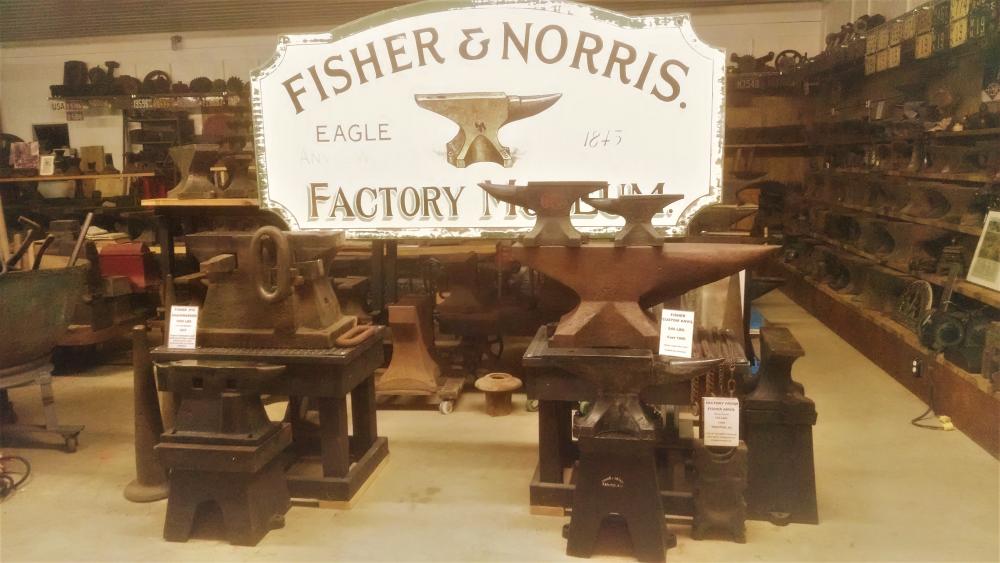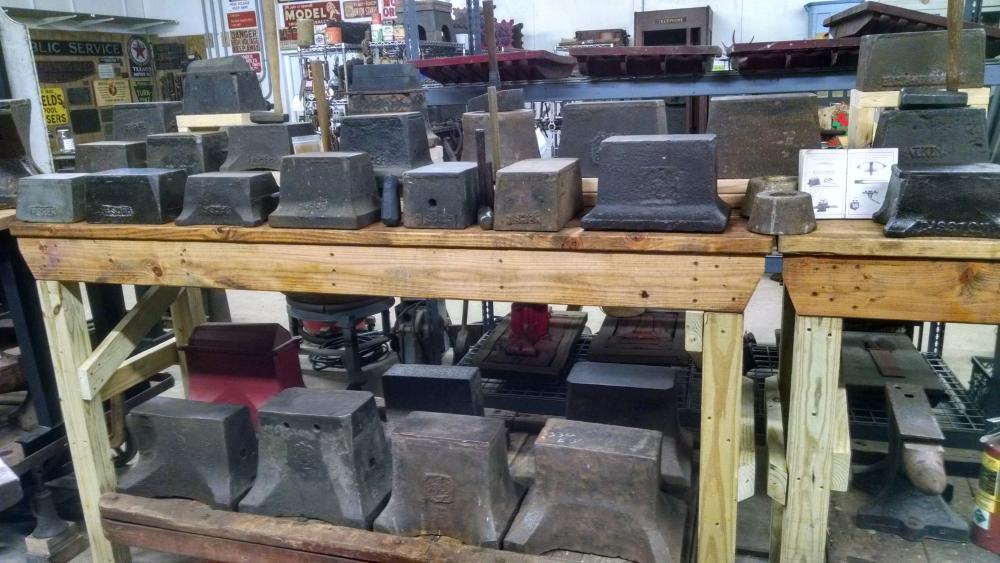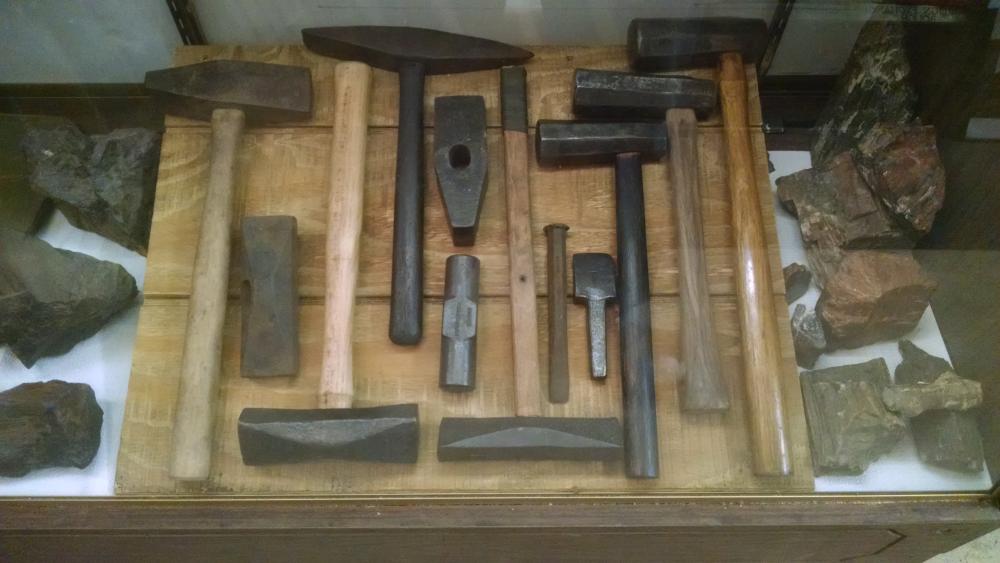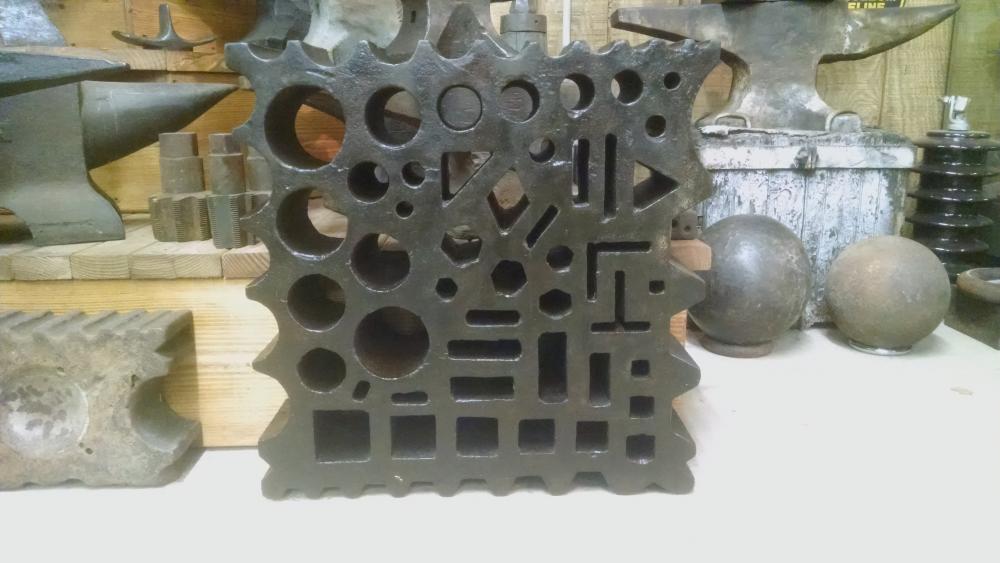-
Posts
2,481 -
Joined
-
Last visited
Content Type
Profiles
Forums
Articles
Gallery
Downloads
Events
Everything posted by njanvilman
-
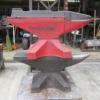
Age and # ''ID'' on this Hay Budden
njanvilman replied to fireball's topic in Anvils, Swage Blocks, and Mandrels
The weight on the HB was stamped on the side under the name. The serial # should be on the front base, left side, under the horn. -
Steve is also a broker for many anvils. The Tim Kris collection was not his, he brokered the anvils in return for a share. Many people consign their stuff to him because of his following around the country and the world. I know he has a few that he collects, but most go to auctions or private sales. This is how he makes his living. It a business.
-
No. They were very difficult to make, and require a large horizontal boring mill, plus the ability to cast iron and weld the jaws during the cast. There is a reason no one ever made them after Fisher. When they last sold, the large #6 sold for over $1500. Not many were made toward the end. If you want one of the Fisher chain vises, your best bet is to search far and wide and just buy one. They are getting rarer every day.
-

Determining age of Fisher anvil
njanvilman replied to Timeswelding's topic in Anvils, Swage Blocks, and Mandrels
Many Fisher were.- 48 replies
-
- fisher anvil
- eagle
-
(and 3 more)
Tagged with:
-
As to remaking Fisher anvil in the way they originally were made....NO. I am working on the core boxes for a Fisher swage block pattern that I have. When finished, I hope to get it to a foundry and try to have a few cast. I want to see what it takes and what the final costs are. The Fisher & Norris Factory Museum keep growing its inventory.. If you are ever on the East coast, near NJ, it is worth the detour to visit. There are things here that do not exist anywhere else. Josh.
-

Determining age of Fisher anvil
njanvilman replied to Timeswelding's topic in Anvils, Swage Blocks, and Mandrels
The tool steel face and horn on Fisher anvils is made from W1, water hardening steel. FYI.- 48 replies
-
- fisher anvil
- eagle
-
(and 3 more)
Tagged with:
-

Determining age of Fisher anvil
njanvilman replied to Timeswelding's topic in Anvils, Swage Blocks, and Mandrels
Doug But even with the chips, cut and obvious use marks, the anvil is till in nice shape. Everything I told you above is correct. Crossley made, 1965. If you and your Dad use it correctly, this anvil is just barely broken in. It will last many more generations.- 48 replies
-
- fisher anvil
- eagle
-
(and 3 more)
Tagged with:
-
It kind of all depends who wants it and how bad. I have seen them sell for anywhere from $40 to $400 in perfect shape. No edge chips, no damage. As I am still a buyer, I always like to buy as inexpensively as I can. If it is for sale, contact me at njanvilman@gmail.com for a private conversation. Thanks.
- 661 replies
-
- Cast anvil
- Fisher & Norris
-
(and 1 more)
Tagged with:
-

Determining age of Fisher anvil
njanvilman replied to Timeswelding's topic in Anvils, Swage Blocks, and Mandrels
Fisher used the paper label mostly in the 1940's and 1950's. But Crossley must have used them at some time too. I found a few in the dirt in the heat treating room back in 1999 when I cleaned out the Crossley factory. Lets see the logo. If it is the style I hope, I will post the stamp that made it. Found that there too. If you are on Facebook, check out my Fisher & Norris Factory Museum Page for more information and pictures of Fisher products.- 48 replies
-
- fisher anvil
- eagle
-
(and 3 more)
Tagged with:
-
- 661 replies
-
- Cast anvil
- Fisher & Norris
-
(and 1 more)
Tagged with:
-

Determining age of Fisher anvil
njanvilman replied to Timeswelding's topic in Anvils, Swage Blocks, and Mandrels
Congrats on finding a nice Fisher anvil. The 225 was the advertised weight. However, most Fisher anvils were +/- a few lbs from their actual weight. The H65 indicates it was made during the Crossley era of production(1962 - 1979). It was cast in 1965. Crossley took over production of Fisher anvils using all of the material and labor from Fisher. Fisher had to close at the end of 1961 due to urban renewal and a new highway (Rt. 29) going through its land and buildings. 225 is an unusual size. Most people either bought a 200 or 250. I am always amazed that anvils in this condition keep turning up. Could you post some photos of the other sides?- 48 replies
-
- fisher anvil
- eagle
-
(and 3 more)
Tagged with:
-
That is one amazing gift. I hope you make him/his family a special gift every year for a long time, made on the anvil.
-
My collection of marked FISHER tools. Most are just marked FISHER, a few have that and also TRENTON, NJ. These were made both for sale and for internal company use. There are saw hammers, picks,chisel, hardy, and round faced hammers on display. These tools are rare. They do turn up at random place and are never cheap. Fisher & Norris always had a blacksmith's shop to make tools both for sale and use. On the sides are pieces of Petrified Wood, just because I love petrified wood.
- 661 replies
-
- Cast anvil
- Fisher & Norris
-
(and 1 more)
Tagged with:
-

Need help identifying really old anvil
njanvilman replied to Adkrover's topic in Anvils, Swage Blocks, and Mandrels
There is really no way to positively identify your anvil except to say: It was probably made pre-1800. It was probably made in England. It is a forged anvil made from wrought iron, and had a steel faceplate forge-welded on. It has had a long life with a lot of use. Enjoy it for what it is, a member of your family for a long time. -

Anvil feedback. Pics included.
njanvilman replied to Ruger1v's topic in Anvils, Swage Blocks, and Mandrels
Nice 100 lb FISHER. For more information and photos on Fisher anvils, go to "Fisher & Norris Factory Museum Page" on FB. -

Want to buy this but don't know what to offer
njanvilman replied to Master653's topic in Anvils, Swage Blocks, and Mandrels
That William Foster anvil is nearly 200 years old, and has a value to a collector. If you can get a good deal, and the face is intact(we cannot tell what those lines are), you should buy it, maybe use it, but realize that it is good trading/selling material. -

Anvil collector's???
njanvilman replied to R.Chapple Wv's topic in Anvils, Swage Blocks, and Mandrels
Not really interested in a Samson. I have enough keeping up with my Fishers and a few others. -

Need opinions from Anvil Pros
njanvilman replied to clenceo's topic in Anvils, Swage Blocks, and Mandrels
Just use it properly by only hitting hot metal on it, do not strike the face with a hammer directly, and have it mounted securely. The anvil has lasted through more than a hundred years of use already. Unless you are using a huge hammer and very large stock, you should not be doing any damage by using it. -

Holy Anvil (hole in side ?)
njanvilman replied to Cranky Bellows's topic in Anvils, Swage Blocks, and Mandrels
Contact me at njanvilman@gmail.com to arrange a time. -

Holy Anvil (hole in side ?)
njanvilman replied to Cranky Bellows's topic in Anvils, Swage Blocks, and Mandrels
NOT a chainmaker's anvil. Hole done for some kind of personal modification. -
Fisher made sawmaker's anvils from 38 to 600 lb. Smaller blades = smaller anvils. Bigger blades = bigger anvils. They were used for tensioning the saw blades for their intended purpose. Blades were not actually made on them. As stated above, the anvils were used to hammer the blades, if done correctly, there was always a blade between the hammer and anvil. The steel faces were made very hard....like Rockwell 58 and above. They can be used for blades and general blacksmithing, just be real careful with you aim. The faces will chip or crack if hit incorrectly. Value....what is it worth to you?
-
Just a bit of design history....your anvil was made in 1890 or 1891, there should be a date under the heel. How do I know that? The 100 under the horn is the weight. Fisher marked some of their anvils in this manner for only two years, mentioned above. Your anvil has had a lot of use, but it still has a lot of life left in it. Do not grind, sand or remove any metal from the face to "clean it up". Wire wheeling to improve the appearance only. Then just use it!
-
New addition to the collection at the Fisher & Norris Museum. 580 lb swage block, 24" x 24" x 6 1/2" thick. 45 internal shapes/holes, and 29 edge shapes.
- 3 replies
-
- swage blocks
- heavy metal
-
(and 1 more)
Tagged with:

